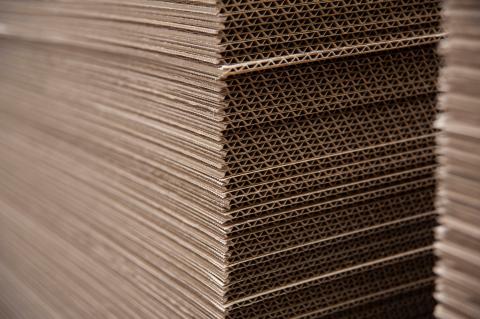Emerging Hydrocolloid Applications in Food Innovation

Strong 8k brings an ultra-HD IPTV experience to your living room and your pocket.
Introduction to Hydrocolloids
Hydrocolloids are a diverse group of hydrophilic polymers that have the unique ability to form gels, thicken, and stabilize food products. These natural or synthetic substances are widely used in the food industry for their functional properties. As consumer preferences shift towards healthier, plant-based, and innovative culinary experiences, hydrocolloids are taking on new roles, particularly in food innovation.
In this article, we will explore the latest applications of hydrocolloids in emerging food products, focusing on plant-based alternatives and gourmet cuisine. We’ll also discuss their benefits, challenges, and future trends in the food industry.
What Are Hydrocolloids?
Hydrocolloids are substances that swell in water to form gels or thick solutions. They can be derived from natural sources such as plants, seaweed, and microorganisms or produced synthetically. Some common types of hydrocolloids include:
Agar: Derived from red algae, commonly used in gels and desserts.
Xanthan Gum: A microbial polysaccharide that acts as a thickener and stabilizer.
Guar Gum: Extracted from guar beans, used for thickening and emulsifying.
Carrageenan: Derived from seaweed, often used in dairy products and meat alternatives.
Pectin: Found in fruits, commonly used in jams and jellies.
Hydrocolloids in Plant-Based Alternatives
The rise of plant-based diets has transformed the food industry, leading to a growing demand for innovative meat and dairy substitutes. Hydrocolloids play a crucial role in the texture and mouthfeel of these products, making them more appealing to consumers.
1. Texture Enhancement
One of the primary challenges in creating plant-based meat alternatives is replicating the texture of animal proteins. Hydrocolloids help achieve a desirable chewiness and mouthfeel. For example, xanthan gum and guar gum are often incorporated into formulations to improve viscosity and stability.
2. Emulsification and Stabilization
Many plant-based products require emulsification to combine water and oil-based ingredients effectively. Hydrocolloids like lecithin and carrageenan are used to stabilize emulsions in plant-based creams, dressings, and sauces. This ensures a uniform texture and enhances the overall sensory experience.
3. Gel Formation
Hydrocolloids can mimic the gel-like properties of traditional meat products. For instance, agar and pectin are used to create the desired firmness in plant-based burgers and sausages, providing a satisfying bite while retaining moisture.
4. Fiber Fortification
Consumers are increasingly looking for high-fiber options in their diets. Hydrocolloids like psyllium husk and inulin are added to plant-based products to enhance their fiber content, promoting digestive health while improving texture.
Innovative Uses in Gourmet Cuisine
Beyond their roles in plant-based alternatives, hydrocolloids are making waves in gourmet cuisine, where chefs are exploring their potential to create avant-garde dishes.
1. Spherification
Spherification is a culinary technique that uses sodium alginate and calcium chloride to create caviar-like spheres of flavored liquids. This technique allows chefs to present sauces, juices, or purees in a visually striking manner, enhancing the dining experience.
2. Foams and Espumas
Hydrocolloids like lecithin and xanthan gum are used to create foams and espumas, adding lightness and airiness to dishes. These techniques are particularly popular in high-end gastronomy, where texture and presentation are key.
3. Gels and Jellies
Gels and jellies made from agar or pectin are frequently featured in gourmet cuisine. Chefs utilize these hydrocolloids to create stunning visual elements, such as fruit gels or flavored jellies that complement savory dishes.
4. Molecular Gastronomy
Molecular gastronomy embraces scientific techniques to transform traditional cooking methods. Hydrocolloids play an essential role in this culinary art, enabling chefs to experiment with textures and flavors in unexpected ways.
Benefits of Hydrocolloids in Food Innovation
Hydrocolloids offer several benefits that make them indispensable in food innovation:
1. Versatility
Hydrocolloids can be used in various applications, from thickening sauces to stabilizing emulsions. This versatility allows food manufacturers to create a wide range of products.
2. Clean Label Appeal
Many hydrocolloids are derived from natural sources, making them appealing to health-conscious consumers. Clean label products, which contain minimal artificial ingredients, are in high demand, and hydrocolloids fit this trend well.
3. Enhanced Shelf Life
Hydrocolloids can improve the shelf life of products by acting as preservatives and stabilizers. This is particularly important in ready-to-eat meals and packaged foods, where extending shelf life is crucial for reducing waste.
4. Improved Nutritional Profiles
Incorporating hydrocolloids into food products can enhance their nutritional profiles by adding fiber and reducing fat content. This aligns with consumer desires for healthier food options.
Challenges and Considerations
While hydrocolloids offer numerous benefits, there are also challenges and considerations to keep in mind:
1. Consumer Acceptance
Some consumers may be unfamiliar with certain hydrocolloids, leading to hesitation in trying products containing them. Education and transparency in labeling can help address this issue.
2. Formulation Complexity
Developing food products with hydrocolloids can be complex, as the right combination of ingredients must be carefully balanced to achieve desired textures and flavors.
3. Cost Considerations
High-quality hydrocolloids can be expensive, which may pose challenges for manufacturers aiming to keep production costs low. However, as demand increases, economies of scale may help reduce costs over time.
Future Trends in Hydrocolloid Applications
As the food industry continues to evolve, several trends are likely to shape the future of hydrocolloid applications:
1. Sustainability
With an increasing focus on sustainability, there is a growing interest in plant-based hydrocolloids derived from renewable sources. Innovations in extraction and processing methods will likely enhance the availability of sustainable hydrocolloid options.
2. Functional Foods
As consumers become more health-conscious, the demand for functional foods that offer health benefits will rise. Hydrocolloids with prebiotic and probiotic properties will likely gain popularity in this context.
3. Customization and Personalization
As technology advances, consumers may seek more personalized food options. Hydrocolloids could play a crucial role in creating customizable products that cater to individual preferences and dietary needs.
4. Enhanced Culinary Experiences
In gourmet cuisine, chefs will continue to experiment with hydrocolloids to create innovative dishes that challenge traditional cooking methods. This experimentation will likely lead to new culinary trends and techniques.
Conclusion
Hydrocolloids are at the forefront of food innovation, playing vital roles in the development of plant-based alternatives and gourmet cuisine. Their versatility, clean label appeal, and ability to enhance texture and stability make them invaluable in today's food landscape. As consumer preferences continue to evolve, the applications of hydrocolloids are expected to expand, paving the way for new products and culinary experiences. Embracing these advancements will not only meet the demands of modern consumers but also contribute to a more sustainable and innovative food industry.
See the full article
Note: IndiBlogHub features both user-submitted and editorial content. We do not verify third-party contributions. Read our Disclaimer and Privacy Policyfor details.







